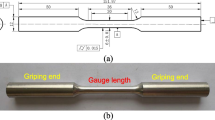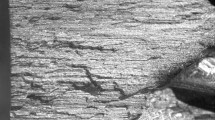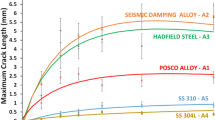Fracture resistance of low- and medium-carbon steels depending on type of microstructure (ferritepearlite, bainite, and martensite) and its volume fraction is studied. On the basis of studying the temperature dependence for impact strength of V-notched samples and pre-cracked specimens the contribution of work for crack initiation and propagation to the general specific impact energy of steels with a different structural type is revealed. It is shown, that the main part of failure energy in low-carbon steels with ferrite-pearlite structure is work for crack initiation. For low-carbon martensite steels the work for crack initiation and propagation is comparable. Failure resistance of tempered low- and medium-carbon steels depending on the quantitative relationship of martensite, bainite and ferrite structures is described. Characteristic structural features of lower and upper bainite influencing fracture resistance are detailed. It is shown that failure resistance of such complex structures is governed by properties of the components, and also their amount and location. Polygonal ferrite, whose separation occurs mainly at the boundaries of previous austenite grains, has a particularly unfavorable effect on ductility properties and cold resistance.





Similar content being viewed by others
References
V. N. Zikeev, Yu. D. Morozov, B. P. Sharov, and M. Yu. Matrosov, “Prospects for producing especially cold-resistant ferritic steel economically alloyed with nickel for storage and transportation tanks for compressed natural gas,” Metallurg, No. 2, 34–37 (2020).
V. M. Mishin and G. A Filippov, Physics of Steel Slow Failure. Monograph [in Russian], Poligrafprom, Mineral’nye Vody (2013).
A. R. Mishet’yan, I. P. Shabalov, O. N. Chevskaya, and G. A. Filippov, “Effect of structural state and temperature on resistance to crack generation and propagation for steels of different strength categories,” Metallurg, No. 12, 43–50 (2017).
I. P. Shabalov, V. G. Filippov, L. A. Baeva, and O. N. Chevskaya, “Structural state and cold resistance of ultralow carbon martensitic steels after controlled rolling and tempering,” Stal’, No. 11, 44–48 (2017).
G. A. Filippov, O. V. Livanova, D. M. Solov’ev, and I. P. Shabalov, “Comparative analysis of the effect of forming method on a set of mechanical properties and failure resistance for metal of electrically welded large diameter pipes,” Probl. Chern. Met. Materialoved., No. 5, 56–65 (2017).
M. Yu. Matrosov, I. V. Lyasotskii, A. A. Kichkina, D. L. D’yakonov, and A. A. Efimov, “Features and classification of the structure of low-carbon, low-alloy, high-strength pipe steels,” Stal’, No. 1, 65–74 (2012).
I. P. Shabalov, A. R. Mishet’yan, and G. A. Filippov, “Cold resistance and tendency towards strain ageing for steels for gas pipelines in relation to structural state,” in: Prospective Materials and Technology, Vol. 1, Vitebsk, Belarus’ (2017).
M. Yu. Matrosov, M. S. Sakharov, O. N. Sychev, P. A. Mishnev, et al., “Steel for pipes of strength class K60 with microstructure of ferrite, martensite, and M/A-component for sections of main pipelines intersecting active tectonic disturbance areas,” Metallurg, No. 1, 43–54 (2021)
V. N. Zikeev, R. K. Guseinov, and A. P. Gulyaev, “Effect of carbon on mechanical properties of nickel-cobalt steel,” Spets. Stali Splavy, No. 4, 24–29 (1975).
M. L. Bernshtein and A. G. Rakhshtadt (editors), Steel Metal Science and Heat Treatment. Reference [in Russian], Metallurgiya, Moscow (1991–1995).
A. P. Gulyaev, Clean Steel [in Russian], Metallurgiya, Moscow (1975).
V. I. Sarak, B. N. Shubin, and R. I. Éntin, “Nonuniform distribution of internal stresses and steel tendency towards brittle failure,” FMM, 29, No. 1, 143–150 (1970).
S. I. Sakhin, “Role of intermediate structures during heat treatment of medium-alloy structural steel,” in: Metallovedenie [in Russian], Sudpromgiz, Leningrad (1959).
F. B. Pickering, “Some aspects of the relationships between the mechanical properties of steels and their microstructures,” TISCO, 27, No. 1-4, 105–132 (1980).
M. E. Morton, “Property-structure relations in quenched and tempered 2% Mn steel — strength metals and alloys,” Proc. 6th Int. Conf. Melburn, 16–20 Aug. 1982, 1, 153–159 (1982).
A. P. Gulyaev, Yu. S. Golovanenko, and V. N. Zikeev, “Effect of amount of non-martensitic transformation products on failure resistance of improved structural steel,” MiTOM, No. 7, 60–67 (1987).
E. Bain, Alloying Elements in Steel, Pergamon Press (1961).
M. Yu. Matrosov, A. A. Kichkina, S. V. Golovin, L. I. Éfron, et al., “Control of structure ad properties of pipe steel alloyed with chromium during cooling after thermomechanical rolling,” Metallurg, No. 1, 36–44 (2019).
J. Ohmori, H. Ohtani, and T. Kunetake, “Duplex martensite bainite structure,” Metal Science, 8, No. 11. 357–366 (1974).
P. G. Martynov, M. Yu. Matrosov, A. V. Mitrofanov, K. Yu. Barabash, et al., “Study of the effect of heat treatment regimes on the microstructure and mechanical properties of high-strength rolled sheet (400–450 HB) of low-alloy steel,” Probl. Chern. Met. Mater., No. 4, 46–52 (2017).
Author information
Authors and Affiliations
Corresponding author
Additional information
Translated from Metallurg, Vol. 65, No. 4, pp. 15–25, April, 2021. Russian DOI: 10.52351/00260827_2021_04_15.
Rights and permissions
About this article
Cite this article
Zikeev, V.N., Chevskaya, O.N., Mishet’yan, A.R. et al. Effect of High Strength Structural Steel Structural State on Fracture Resistance. Metallurgist 65, 375–388 (2021). https://doi.org/10.1007/s11015-021-01167-0
Received:
Published:
Issue Date:
DOI: https://doi.org/10.1007/s11015-021-01167-0




